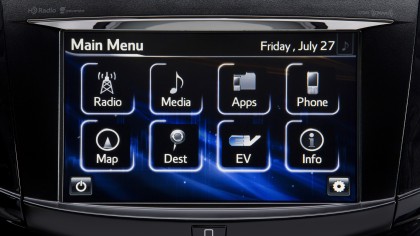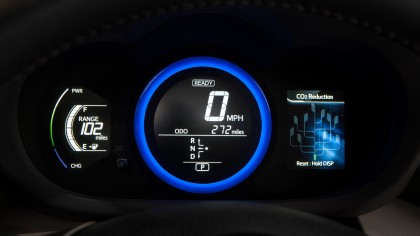How computer modelling could save your life
And save car manufacturers a lot of time
"Safety of course is of crucial importance, to achieve good pedestrian protection," he says. "That requires placing and mounting all rigid parts inside the headlamp in a way that minimises the negative influence on a pedestrian in case of a crash. To accomplish this goal, structural analysis calculations are required, also using computer clusters."

Subtle changes in the computer models enable designers to see how the lighting will look in the final production car: the brightness levels, how much ambient light is created, how lights work when there is an oncoming car or an empty road.
Upcoming Audi vehicles will even use a technology called Matrix Beam that can automatically lower the beam of light so the road is illuminated but the oncoming driver is not blinded.
The result is an eye-catching final design that's fully optimised within a computer model for safety and aesthetics long before the vehicle ever reaches a physical production stage.
Toyota speeds up the Rav4 EV development
In developing any new vehicle, automobile manufacturers look at both the entire vehicle design progression and, at the same time, constantly monitor individual components. Each go hand-in-hand: an over-focus on the final outcome or the component design can lead to problems.
"Computer modelling enables innovations such as the use of new materials and processes by thinking on the vehicle level, doing component tests, then going back to the vehicle level," says Scott Miller, the general manager of vehicle performance development - safety and crashworthiness at the Toyota Technical Center in Michigan, USA.

For example, with the 2013 Rav4 EV, Toyota was able to simulate battery components within the vehicle long before they ever reached the physical prototype stage. Yet it could also model how a component would work in the entire vehicle design.
Get daily insight, inspiration and deals in your inbox
Sign up for breaking news, reviews, opinion, top tech deals, and more.
"In the case of the battery protection energy absorption systems, sub-system component models were built for various local phenomena to set deformations and load targets on a part-by-part basis," he says.

"The result was a nearly optimised section geometry and attachment scheme prior to any vehicle testing. The design from these iterations were then confirmed in full vehicle simulation with minor changes before building initial prototypes. The initial round of physical testing was very successful, with only minor follow-up items."
Miller says computer models had a dramatic effect. Prototyping usually takes about 10 weeks, and test preparation and test analysis for new designs usually each take about two weeks. With the Toyota Rav4 EV, the design feedback cycle went from a 14-week total down to just two weeks, which includes 2-3 days of prototyping, 2-3 days of test prep and one week of analysis.
The implication of all this is that as computer processing speeds improve and software designs become more realistic, the total development time for new cars will reduce even more. That means we should see fresher designs as opposed to sticking with staid vehicles that have worn out their welcome.
John Brandon has covered gadgets and cars for the past 12 years having published over 12,000 articles and tested nearly 8,000 products. He's nothing if not prolific. Before starting his writing career, he led an Information Design practice at a large consumer electronics retailer in the US. His hobbies include deep sea exploration, complaining about the weather, and engineering a vast multiverse conspiracy.
